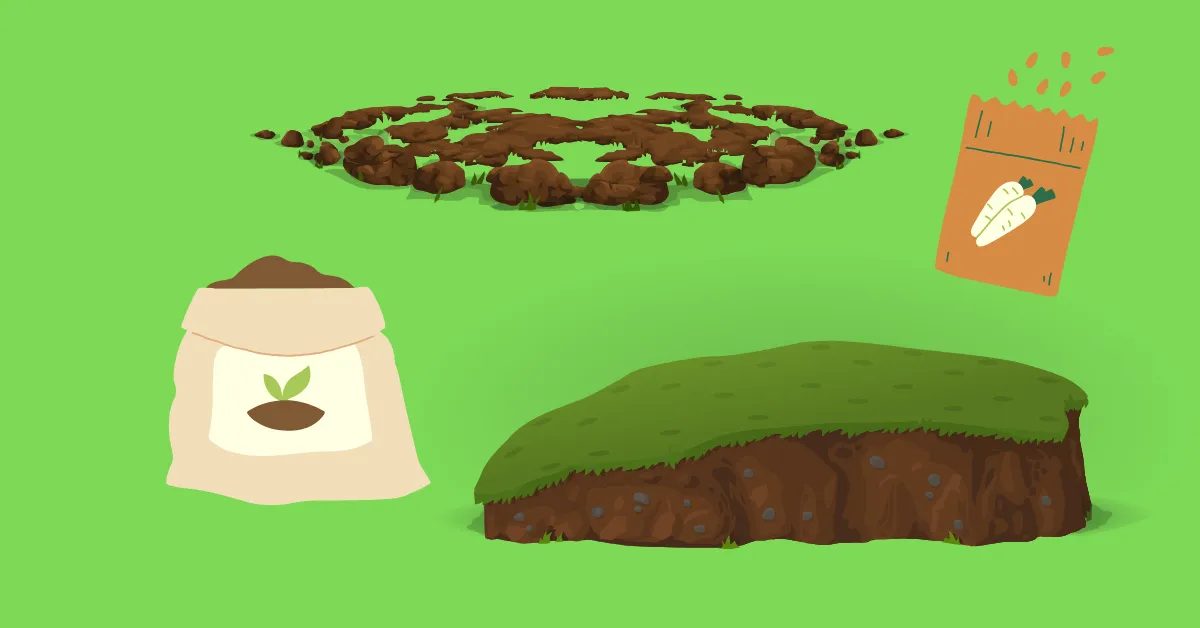A soil texture calculator is a valuable tool for farmers, gardeners, and soil scientists who need to determine the texture of soil based on its composition of sand, silt, and clay. Understanding soil texture is crucial for plant growth, drainage, water retention, and nutrient availability.
To classify soil accurately, professionals use the soil texture triangle—a graphical representation that helps categorize soil into different textural classes. Whether you're using a soil type calculator, soil classification triangle, or USDA soil texture triangle, this guide will help you calculate soil texture, interpret results, and optimize soil for various applications.
Key Takeaways
- The soil texture calculator determines soil type based on sand, silt, and clay percentages.
- The USDA soil triangle is the standard tool for soil classification.
- Soil texture affects drainage, aeration, and fertility.
- Using a soil texture chart or soil texture triangle worksheet simplifies soil analysis.
- The soil estimator helps predict soil properties for farming, gardening, and construction.
What Is a Soil Texture Calculator?
A soil calculator is a tool used to determine the soil type based on its sand, silt, and clay content. It helps classify soil using the soil triangle chart, which visually represents different soil textures.
By inputting the percentage of sand, silt, and clay, a soil texture calculator identifies whether the soil is:
- Sandy (high drainage, low fertility)
- Loamy (balanced, ideal for plant growth)
- Clayey (high water retention, poor drainage)
Understanding soil textural classes is essential for agriculture, landscaping, and soil management.
How to Use the Soil Triangle to Classify Soil
Step 1: Measure Sand, Silt, and Clay Percentages
- Use a soil composition triangle to identify the percent of sand, silt, and clay in your soil sample.
- A calculator for sand helps determine the exact sand content.
Step 2: Locate Your Soil Type on the Soil Triangle
- Find your sand percentage on the bottom of the soil texture triangle.
- Locate your silt percentage on the right side.
- Identify your clay percentage on the left.
Step 3: Identify Your Soil Texture Class
- Follow the lines from each percentage until they intersect on the soil triangle texture.
- The intersection determines your soil textural class.
For a more detailed analysis, the soil texture pyramid or soil textural triangle worksheet can be used.
Understanding the USDA Soil Texture Triangle
The USDA soil triangle classifies soil into 12 major textural classes based on sand, silt, and clay composition.
Soil Textural Classes in the USDA Texture Triangle
| Soil Type | Sand % | Silt % | Clay % |
|---|---|---|---|
| Sand | 85-100 | 0-15 | 0-10 |
| Loamy Sand | 70-85 | 0-30 | 0-15 |
| Sandy Loam | 43-70 | 0-50 | 0-20 |
| Loam | 23-52 | 28-50 | 7-27 |
| Silt Loam | 0-50 | 50-87 | 0-27 |
| Clay Loam | 0-45 | 0-55 | 27-40 |
| Clay | 0-45 | 0-40 | 40-100 |
By referring to the USDA soil texture triangle, you can classify soil with precision.
Why Soil Texture Matters in Agriculture and Landscaping
The texture of soil influences:
- Water Retention – Clay holds water, while sand drains quickly.
- Nutrient Availability – Loamy soils have balanced fertility.
- Root Growth – Sandy soils allow easy root penetration, while clay can be restrictive.
- Erosion Resistance – Silt and clay-based soils are more prone to erosion.
A soil type calculator helps determine the best soil management strategies based on texture.
How to Read a Soil Triangle Chart
A soil triangle chart visually categorizes soil textures using percentages of sand, silt, and clay.
How Do You Use a Soil Texture Triangle?
- Find your sand, silt, and clay percentages.
- Locate each value on the USDA texture triangle.
- Follow the lines to the intersection point.
- Identify the soil type based on the soil texture classification.
A soil textural triangle worksheet simplifies the process for students, farmers, and soil scientists.
Common Soil Textures and Their Uses
| Soil Texture | Best Use |
|---|---|
| Sandy Soil | Well-draining areas, desert plants |
| Loamy Soil | Gardening, agriculture, landscaping |
| Clay Soil | Water retention, pond construction |
| Silt Soil | Floodplains, fertile land |
A soil composition chart helps determine the best soil amendments and fertilizers based on texture.
FAQs: Soil Texture Calculator and Soil Classification
What Determines the Texture of Soil?
The texture of soil is based on the percentage of sand, silt, and clay present.
How Do You Use a Soil Triangle?
You locate the sand, silt, and clay percentages on the USDA soil texture triangle and identify the soil classification.
What Is a Soil Textural Triangle Worksheet?
A soil texture worksheet helps users visually classify soil using the textural triangle.
What Is the Difference Between Soil Texture and Soil Structure?
- Soil texture refers to the percentage of sand, silt, and clay.
- Soil structure describes how soil particles clump together.
Can I Improve My Soil Texture?
Yes! You can improve soil texture by adding organic matter, compost, sand, or clay depending on the desired texture.
Final Thoughts on Soil Texture Calculators
A soil texture calculator is an essential tool for determining soil classification, drainage, and fertility. Whether you’re using a USDA soil texture triangle, soil estimator, or soil classification triangle, understanding soil texture is key to successful agriculture and landscaping.
